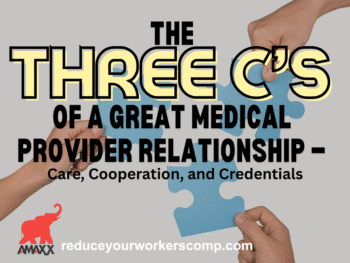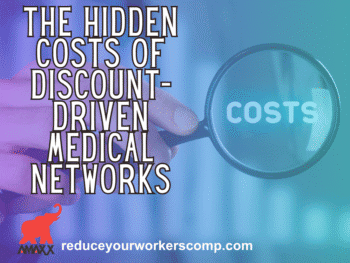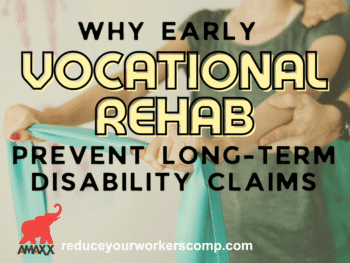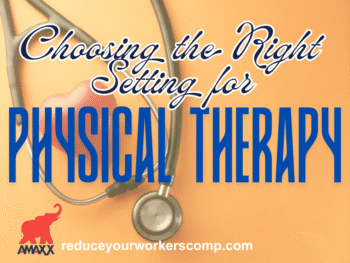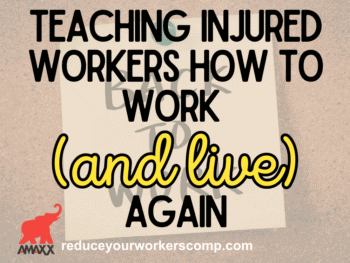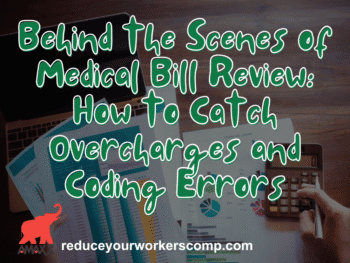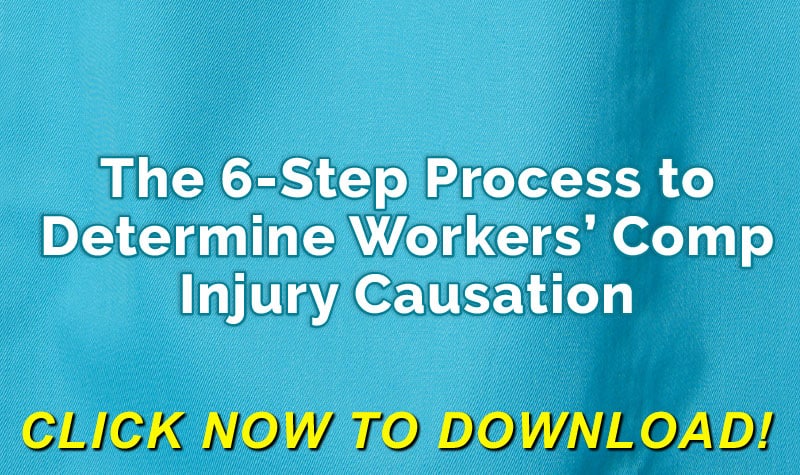
What is Evidence-Based Medicine?
EBM is the practice of using the best available research and clinical expertise to make medical decisions. It relies on a hierarchy of scientific evidence, with the strongest studies—meta-analyses and systematic reviews—sitting at the top, and anecdotal case reports at the bottom. This structured approach allows medical professionals and claims managers to determine the most effective treatments for injured workers, ensuring care aligns with scientifically validated best practices.
Click Link to Access Free PDF Download
“The 6-Step Process To Determine Workers’ Comp Injury Causation”
Application of EBM in Workers’ Compensation
The use of EBM in workers’ compensation varies depending on the stakeholder’s role:
Medical Professionals (Peer Review Doctors, Nurse Case Managers, and Others)
Medical professionals rely on EBM to determine the most effective treatments for workplace injuries. Modern EBM is backed by extensive research and rigorous study designs that ensure better conclusions. Studies range from case reports at the lower end of reliability to randomized control trials (RCTs), which are considered the “gold standard.” At the top of the hierarchy, meta-analyses aggregate data from multiple RCTs to provide the most robust conclusions. Many organizations assign numerical levels to evidence sources, allowing medical professionals to quickly assess the reliability of research supporting a given treatment.
To create effective guidelines, a multidisciplinary editorial advisory board—consisting of neurologists, orthopedists, chiropractors, and pharmacists—reviews research data and translates findings into practical recommendations. This ensures that EBM guidelines reflect a comprehensive, well-rounded approach to injury treatment.
Non-Medical Professionals (Risk Managers, Adjusters, Employers)
For risk managers and claims adjusters, EBM provides an objective framework for managing claims. One of the most common questions at the time of injury is, “How long will my employee be off work?”
EBM injury duration guidelines, published by sources like Official Disability Guidelines (ODG) and MDGuidelines (ACOEM), help answer this question. These guidelines serve three primary purposes:
- Assess reasonableness – Ensuring an employee’s time off work aligns with medically established recovery periods.
- Guide claims management – Identifying when additional medical evaluation or intervention may be necessary.
- Provide benchmarks – Establishing data-driven expectations for return-to-work timeframes and associated cost savings.
State-Mandated Guidelines and Their Impact
EBM guidelines are not uniform across the U.S. States mandate different sets of guidelines, which stakeholders must adhere to when managing claims. Some states, such as Texas and Vermont, have adopted ODG, while others, like Washington, have developed their own guidelines. Still, 21 states—including Virginia—do not have mandated medical treatment guidelines, creating a more complex claims landscape.
It is important to understand which guidelines apply in each state to ensure compliance and effective claims handling. Utilization review nurses, case managers, and peer reviewers must be well-versed in state-specific requirements to apply the correct guidelines.
EBM: A Tool, Not a Rule
While EBM provides structured guidance, it does not replace clinical judgment. Injury duration guidelines present ranges, not absolutes, recognizing that individual recovery can vary based on comorbidities, job demands, and psychosocial factors. However, for non-medical professionals, these guidelines help set appropriate expectations and improve claims outcomes.
Conclusion
Evidence-Based Medicine is a cornerstone of effective workers’ compensation management, ensuring that medical treatment and return-to-work decisions are driven by the best available science. For medical professionals, EBM enhances patient care, while for employers and adjusters, it provides an objective basis for managing claims. By leveraging EBM, all stakeholders can improve injury outcomes, reduce costs, and create a more efficient and equitable workers’ compensation system.

Contact: mstack@reduceyourworkerscomp.com.
Workers’ Comp Roundup Blog: http://blog.reduceyourworkerscomp.com/
Injury Management Results (IMR) Software: https://imrsoftware.com/
©2025 Amaxx LLC. All rights reserved under International Copyright Law.
Do not use this information without independent verification. All state laws vary. You should consult with your insurance broker, attorney, or qualified professional.

